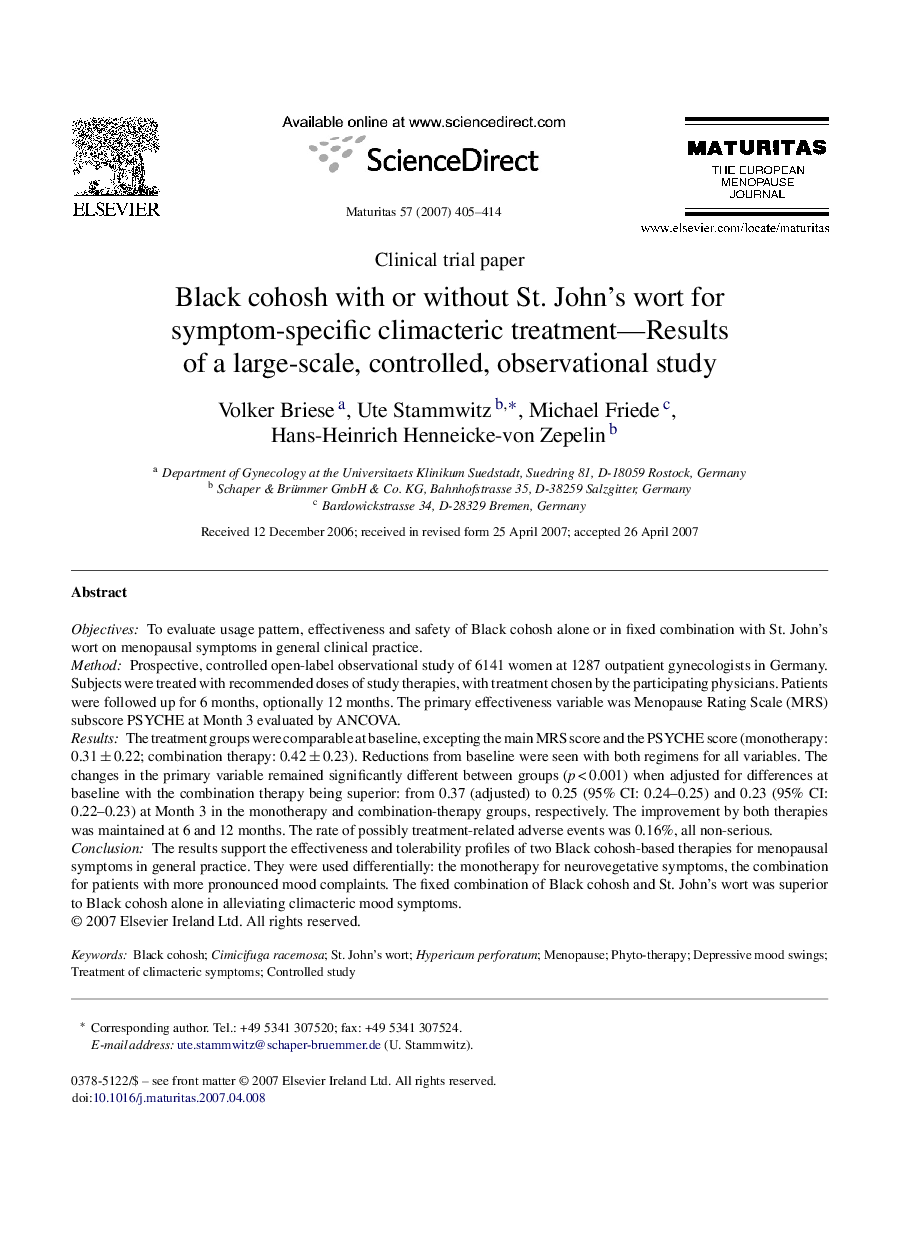| Article ID | Journal | Published Year | Pages | File Type |
|---|---|---|---|---|
| 1918794 | Maturitas | 2007 | 10 Pages |
ObjectivesTo evaluate usage pattern, effectiveness and safety of Black cohosh alone or in fixed combination with St. John's wort on menopausal symptoms in general clinical practice.MethodProspective, controlled open-label observational study of 6141 women at 1287 outpatient gynecologists in Germany. Subjects were treated with recommended doses of study therapies, with treatment chosen by the participating physicians. Patients were followed up for 6 months, optionally 12 months. The primary effectiveness variable was Menopause Rating Scale (MRS) subscore PSYCHE at Month 3 evaluated by ANCOVA.ResultsThe treatment groups were comparable at baseline, excepting the main MRS score and the PSYCHE score (monotherapy: 0.31 ± 0.22; combination therapy: 0.42 ± 0.23). Reductions from baseline were seen with both regimens for all variables. The changes in the primary variable remained significantly different between groups (p < 0.001) when adjusted for differences at baseline with the combination therapy being superior: from 0.37 (adjusted) to 0.25 (95% CI: 0.24–0.25) and 0.23 (95% CI: 0.22–0.23) at Month 3 in the monotherapy and combination-therapy groups, respectively. The improvement by both therapies was maintained at 6 and 12 months. The rate of possibly treatment-related adverse events was 0.16%, all non-serious.ConclusionThe results support the effectiveness and tolerability profiles of two Black cohosh-based therapies for menopausal symptoms in general practice. They were used differentially: the monotherapy for neurovegetative symptoms, the combination for patients with more pronounced mood complaints. The fixed combination of Black cohosh and St. John's wort was superior to Black cohosh alone in alleviating climacteric mood symptoms.
